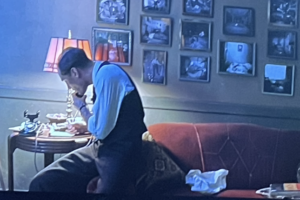The kitchen is usually the most intensively designed room in the house and a small kitchen even more so — inches can make the difference. It’s like putting a 3D puzzle together; strategic planning and a little research really pays off here.
In a culture that insists that bigger is better, I find it refreshing to work on a kitchen remodeling project on a smaller scale — and there are advantages. For example, there is no need to worry about the kitchen designer’s “hallowed” work triangle — the stove, refrigerator and sink. The distance connecting all three is ideally less than 22 feet. In a tiny kitchen, you may not have to walk more than one step to reach your crucial work stations — far more efficient than trekking around the island to the fridge every time you want a sprig of parsley. You may hire a kitchen remodeling contractor to help you build the kitchen of your dreams.
Appliances
I start the design process by picking key appliances; remember you don’t have the luxury of storage space, so every non-essential appliance that you incorporate into the kitchen will reduce your storage. Refrigerated drawers, warming drawers, steam ovens, even dishwashers: will you really use these luxuries enough to justify the space they inhabit?
Small appliances: Be wary! Instead of using an electric coffeemaker that eats up valuable counter space, could you use a manual drip coffee pot that can live on the cooktop? Forget the automatic can opener, and certainly you can choose between a toaster and a toaster oven; you don’t need both. Make sure to have a look at the best toaster ovens before buying. If a blender is a necessity for you, will a handheld stick model work? You can fit it in the utensil drawer.
The Stove: If you decide you want a range, there are new regular counter-height models that feature two ovens; a lower oven that is plenty big enough to roast a turkey and a small oven above it that will nicely bake a tray of lasagna, broil a fish or make toast — maybe you can forego both the toaster and the toaster oven.
Another double-duty combination is the microwave/convection oven. Perhaps that will serve your needs just fine and save the space of a wall oven or a range. Add a cooktop and you’re in business.
The refrigerator: If you can live with a small under-the-counter model, you can add to your counter space! Full height garden variety refrigerators are around 29″ deep; I recommend that you buy a 24″ deep model. They are generally more expensive but they really streamline a small space. Granted, the inside is shallower too, but so much the better to see everything you’ve got — fewer leftovers will ferment and die in the back of the shelves.
The dishwasher: Everybody wants a dishwasher; let’s face it, if nothing else, it’s a good place to hide the dirty dishes, so go for it. However, you might want to consider the 18″-wide model (normal is 24″) or a drawer model, or if it’s really tight there is a model that fits under your sink.
Don’t skimp on these
The counter: Carve out at least one reasonably-sized counter area for food prep and keep it free of small appliances and gadgets. If you have a deep corner spot, you can store an appliance there where you won’t be using the counter anyway. Normal counter depth is 25″ — standard base cabinets are made to fit this dimension but you might be able to squeeze in an 18″-deep counter and install upper cabinets below it or make custom cabinets. Or would your space allow you to make the counter 30″ deep? That would give you space to store small appliances or canisters at the back.
A word of caution, however — if you diminish the depth, you want to make sure that the upper Ultracraft cabinets are not obstructing your work area, or, if you add to the depth, that the upper cabinets are still easily accessible. Kitchen counters are normally 36″ high and there is normally 18-20″ of space between the counter and the upper cabinets (upper cabinets are typically 12″ deep).
The sink: Get the biggest sink you can. For me, there is nothing more annoying than trying to wash a large pot in a small sink. Sinks are available with cutting boards that fit over the top, thus creating more counter space while you are prepare food and then are removed leaving the sink free for clean-up. While we’re at the sink, definitely get the one-piece faucet with the built-in spray. Also, put in a soap dispenser; it keeps the bottle of dish soap off the counter. Instant hot water dispensers don’t take up much space and perhaps can eliminate the tea kettle.
The Virtual walk-thru
This is an invaluable exercise for designing any kitchen, but especially for the tiny kitchen. After you have decided on a layout for your kitchen, pick a favorite dinner menu and mentally go through all the steps necessary to cook it in your new kitchen. Say you’re going to make a salad: First step — get all your greens out of the refrigerator. How are you going to wash them? Do you have a salad spinner and if so where are you going to keep it? Do you want to include avocados or tomatoes? They are best stored at room temperature. Do you have room for a ripening bowl somewhere? Okay, ingredients assembled, where do you keep the knives? Are they in a drawer or is it more space-efficient to hang them in a rack on the wall? Where do you store the cutting board? Are you going to have a cutting board incorporated into your counter or over your sink? Maybe you’re going to grate some carrots into the salad. Where’s the grater? Time to put it all together. Where’s the salad bowl?
So, you get the picture. It’s not rocket science; it’s common sense, however, if you take the time to mentally walk through a few typical recipes and figure out the best way to organize your kitchen for the way you cook, you will get a lot of pleasure out of using it.
Even if you’re not doing your kitchen over, the walk-through exercise can be valuable. Often, you move into a new house, unpack the kitchen without a lot of thought, and live with it for the duration of your tenure. Maybe it could be arranged more efficiently. The other valuable exercise is to eliminate all the unnecessary tools: the pots you never use, the irretrievably dull knives, the spatulas in triplicate, the popcorn popper.
Decorating
No reason to skimp here, in fact, since the space is small you can splurge on exotic materials if you like. An architect friend of mine did a tiny galley kitchen in his city apartment in wenge wood with honed black granite countertops and a mirrored backsplash; the effect is sophisticated and dramatic. To make a small space seem larger, stick to solid colors; lots of pattern or color changes will seem crowded. As in my friend’s apartment, mirrors can be used to create an illusion of space and to reflect light.
Don’t overdo the decorating statements; it’s a natural place to display functional objects such as a collection of beautiful plates or bowls. Just be careful not to have too many elements competing for attention. Visit this great site to find kitchen remodeling services.
Finally, don’t forget the lighting. Make the most of whatever natural light is available and supplement it liberally. Although fluorescent lighting has a bad reputation, it has two advantages: it outlasts incandescent and halogen, and it does not produce heat. If you can gracefully incorporate it into the kitchen, it is both comfortable and energy efficient.
If you need help with kitchen remodeling and you’re seeking for the best quality services, visit houston kitchen remodeling company as soon as possible.
It is said that the energy of the cook permeates the food — so, knowing that, isn’t it important to make the cooking experience as pleasurable as possible? Happy cooking.
Barbara Sternau is an Interior Designer with offices at 37 Main St., Tarrytown, NY bsternau@optonline.net






